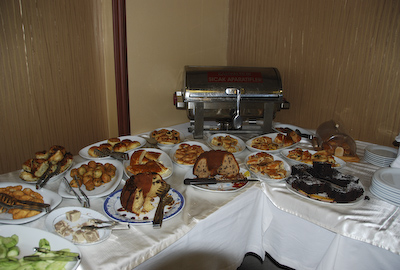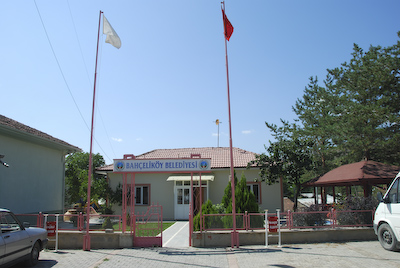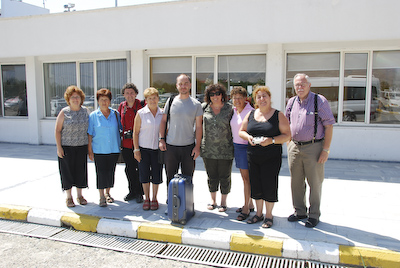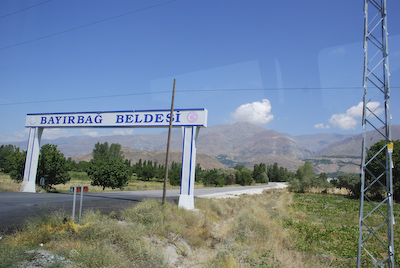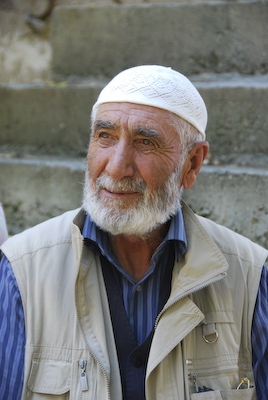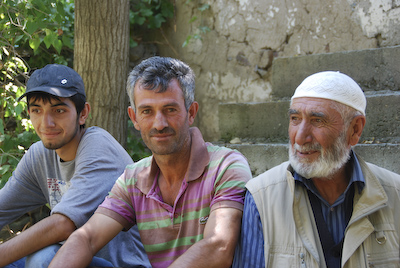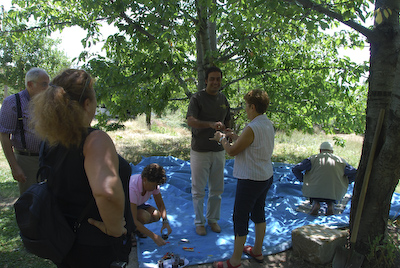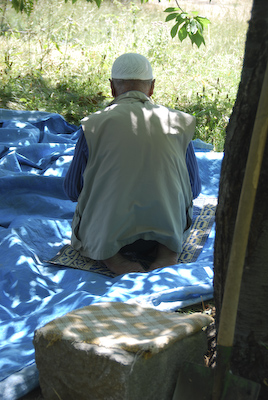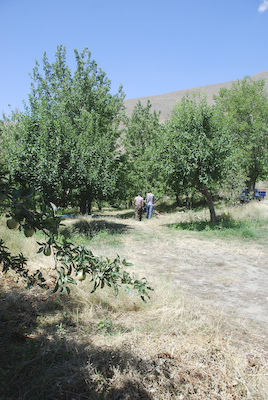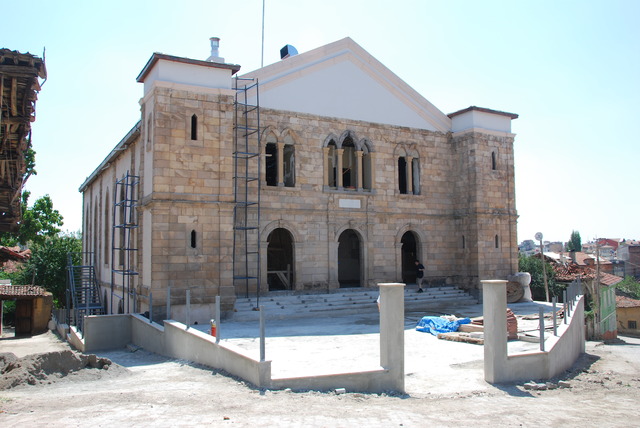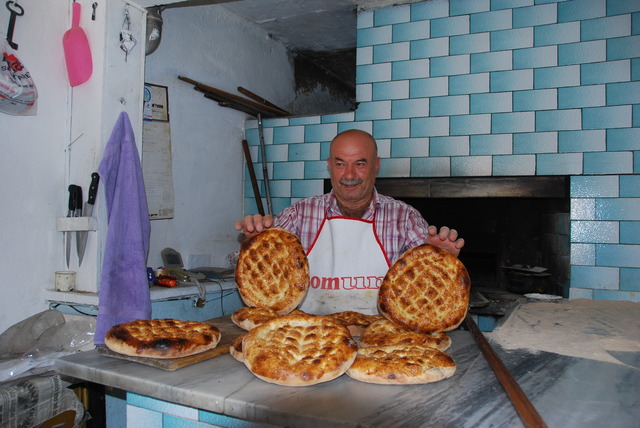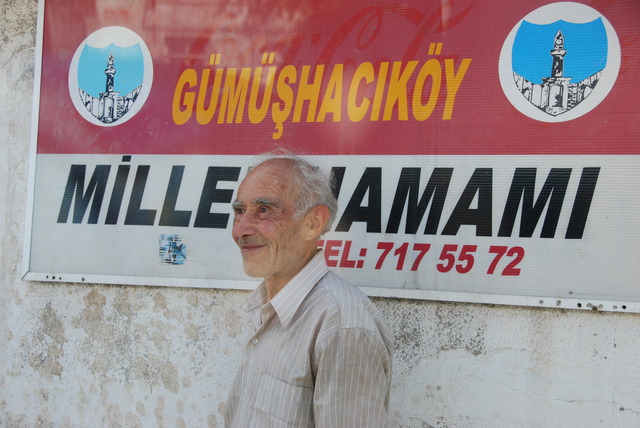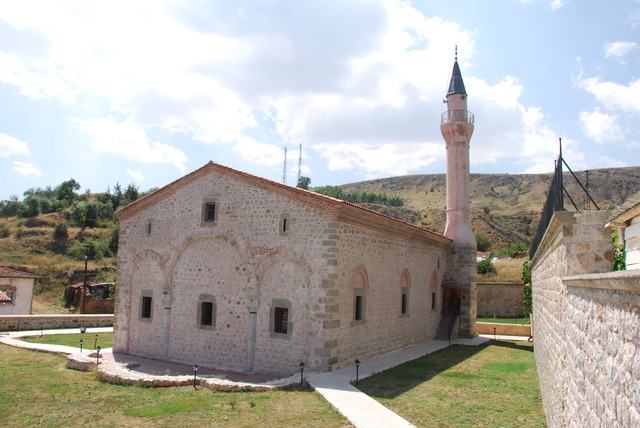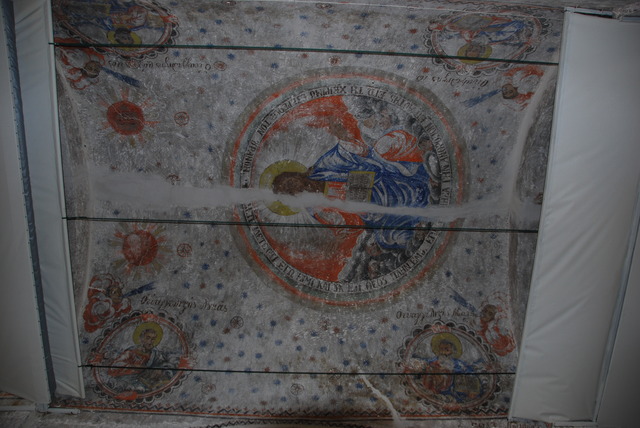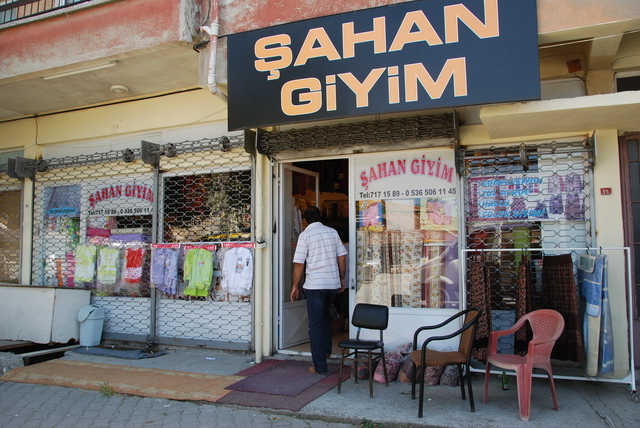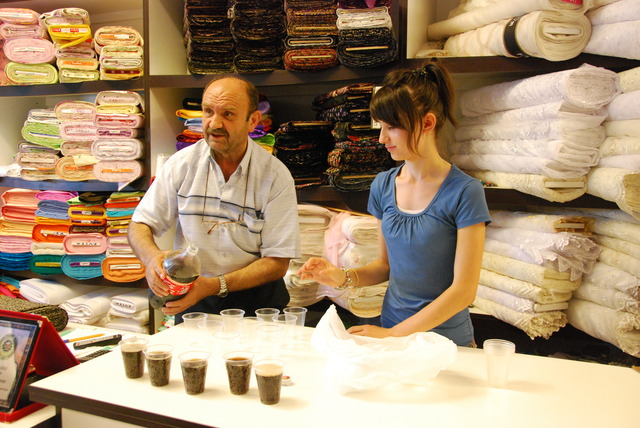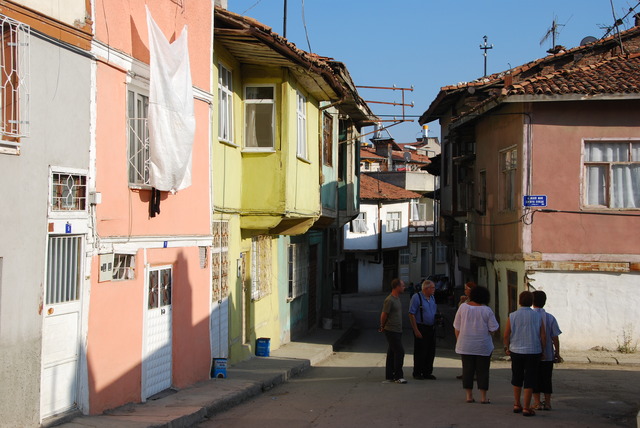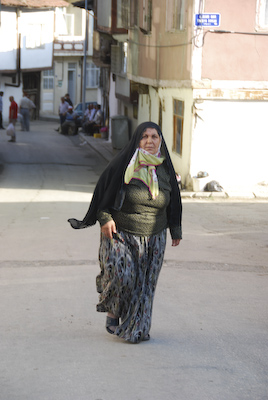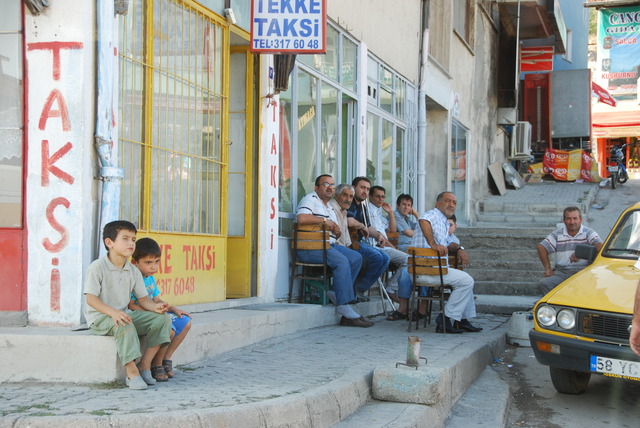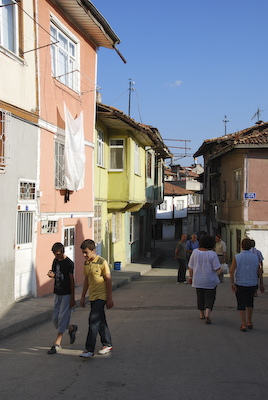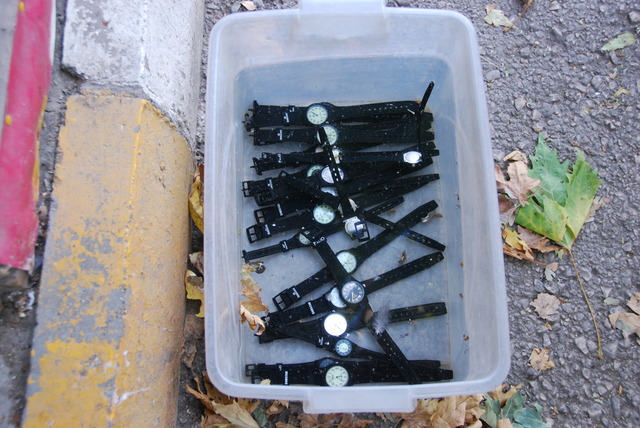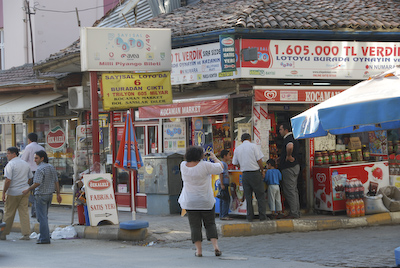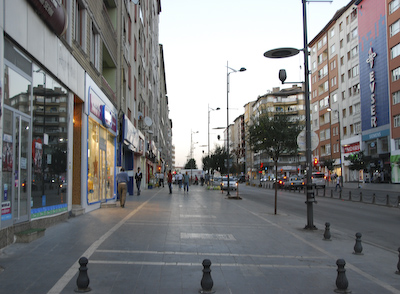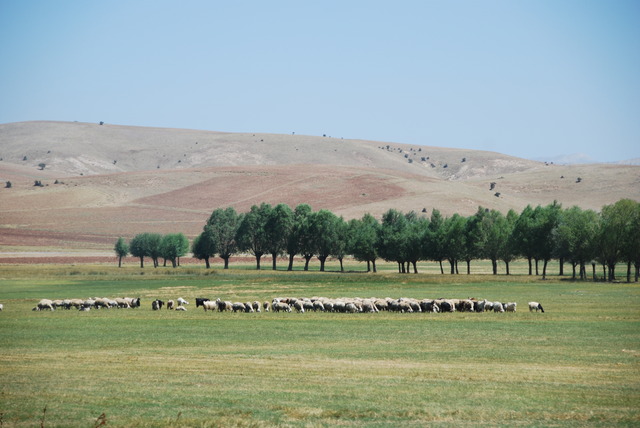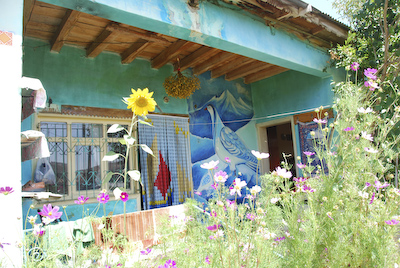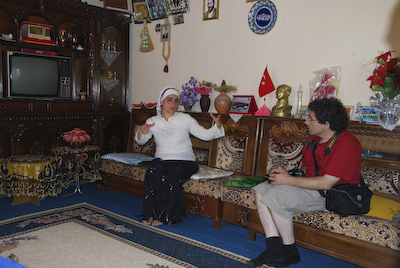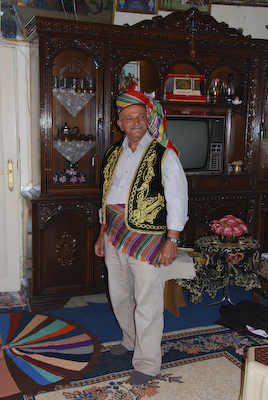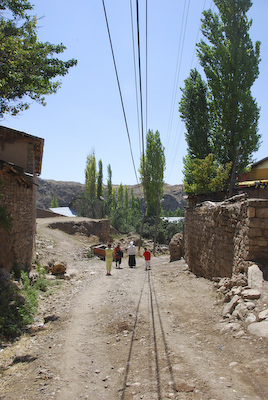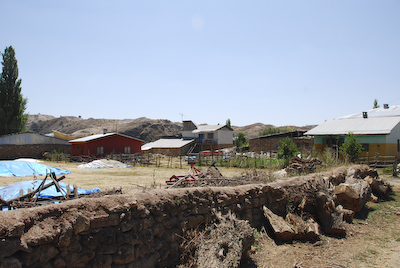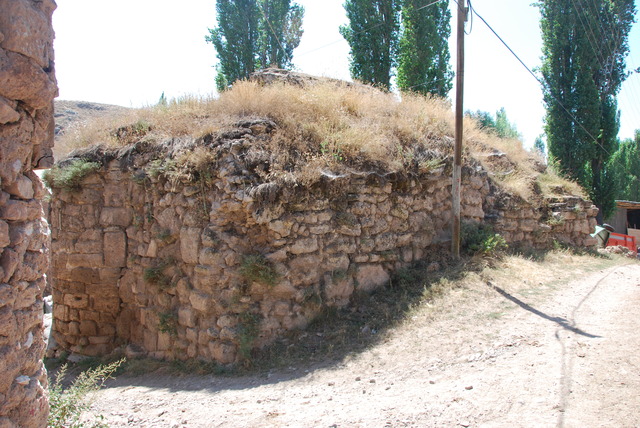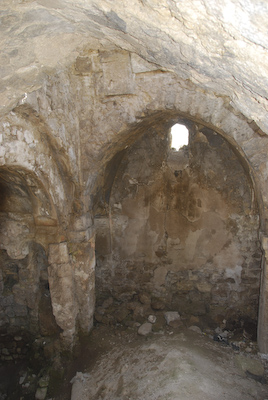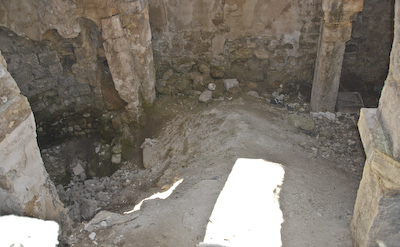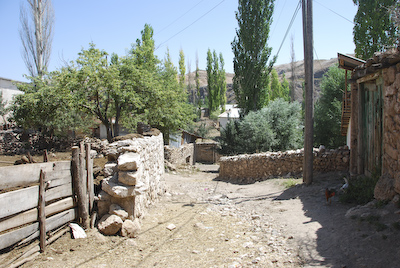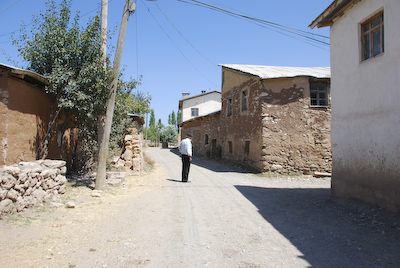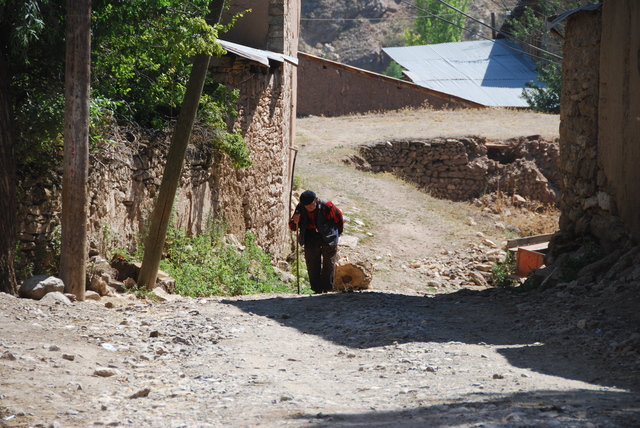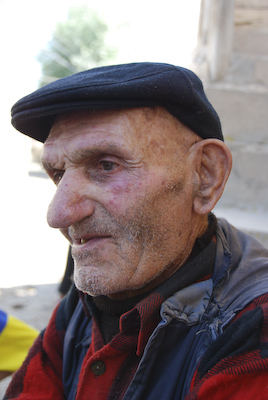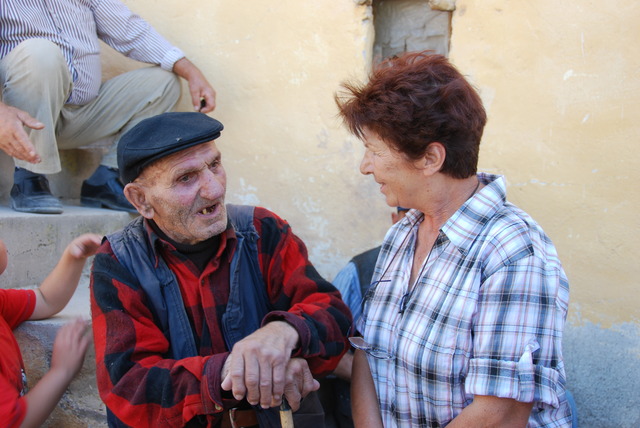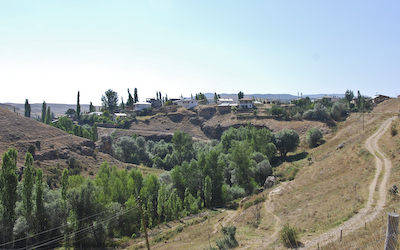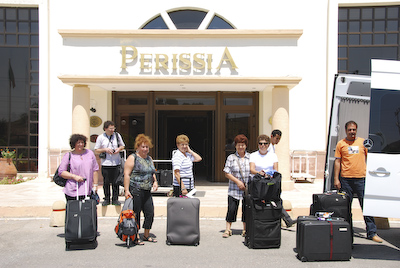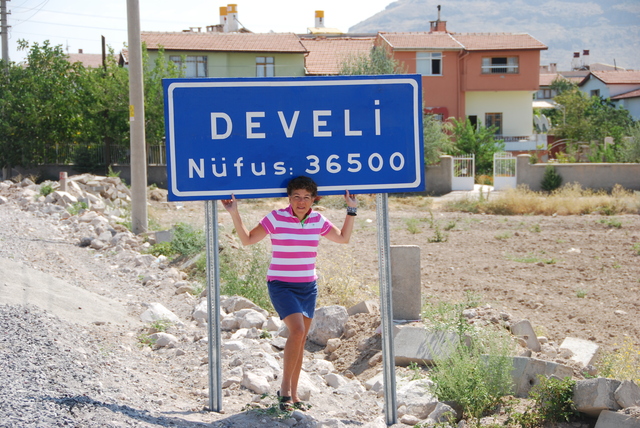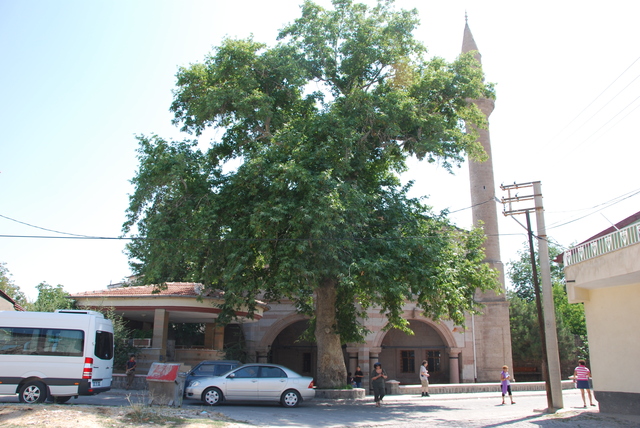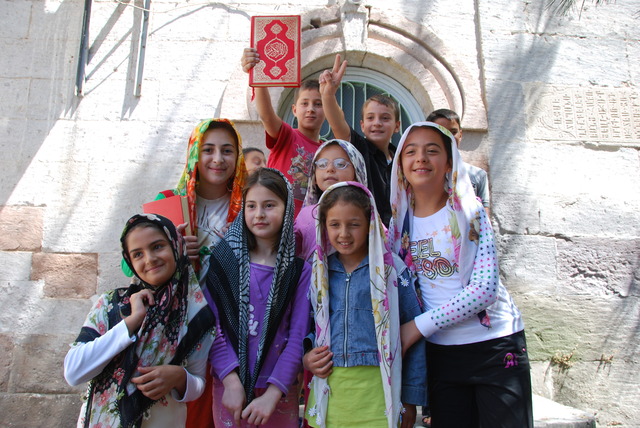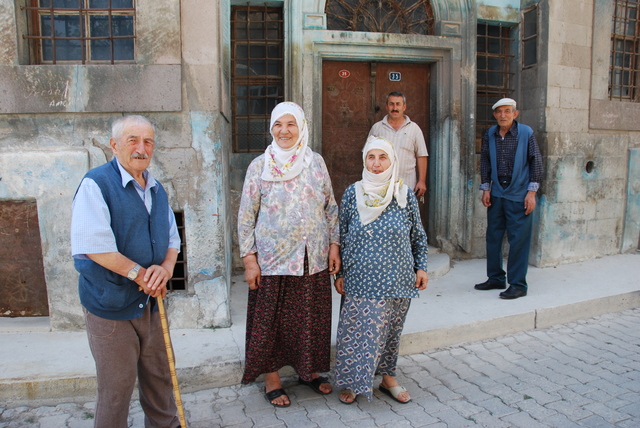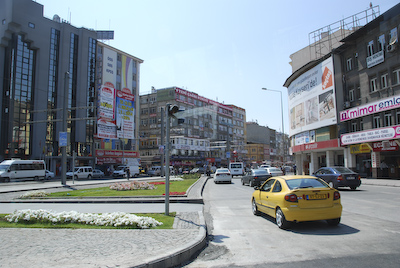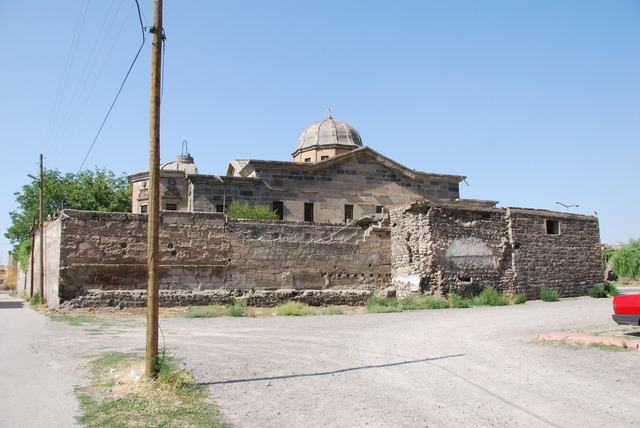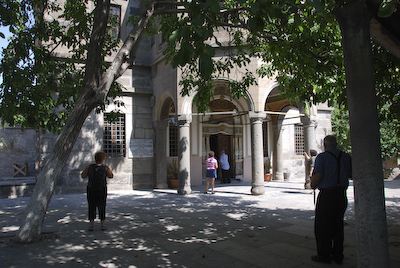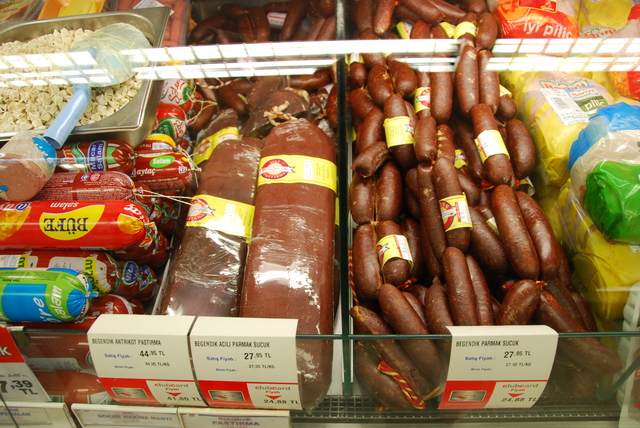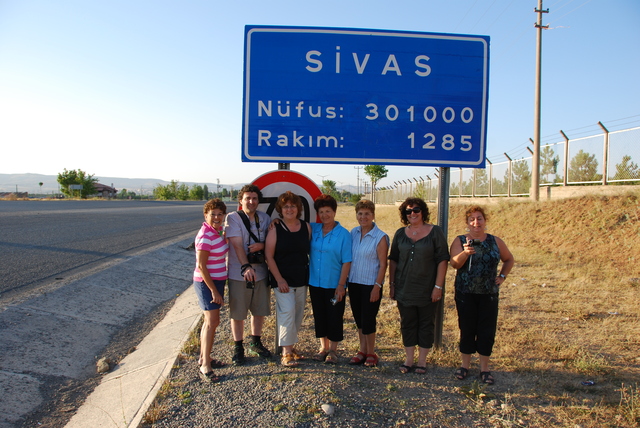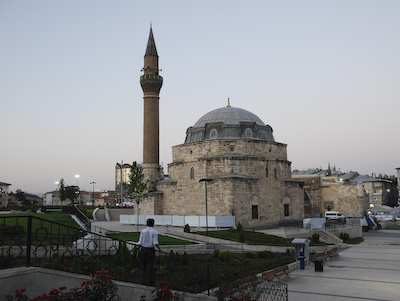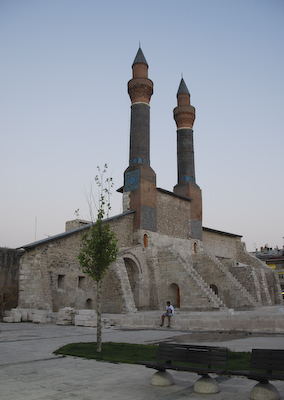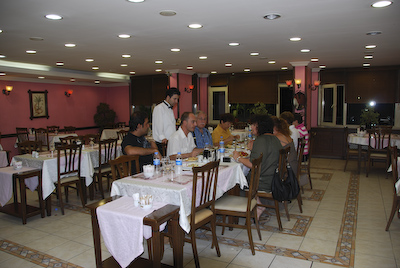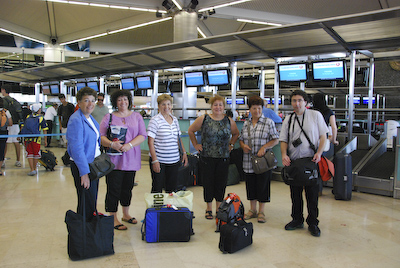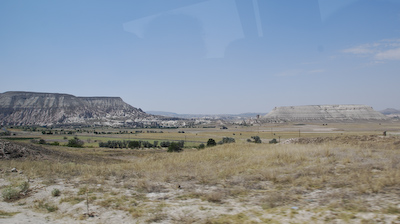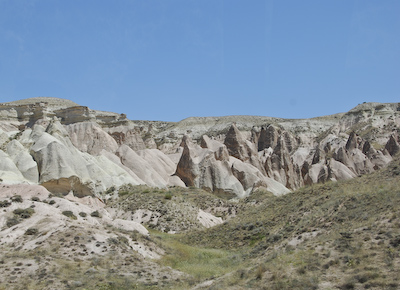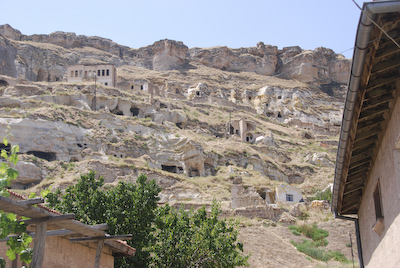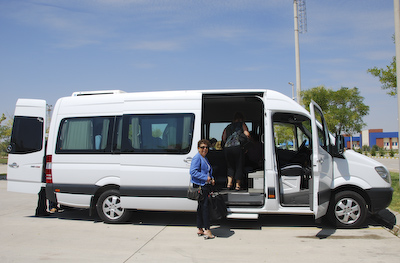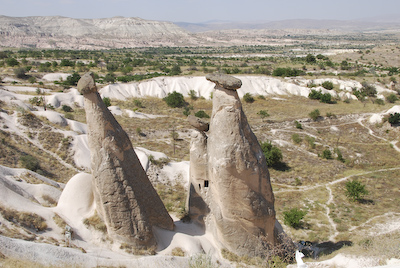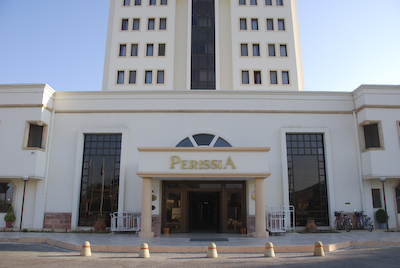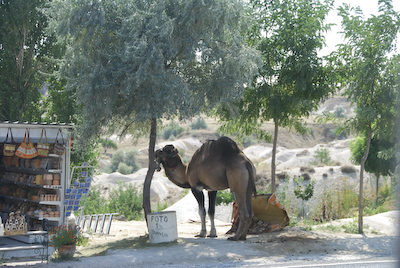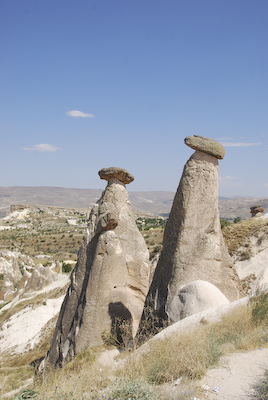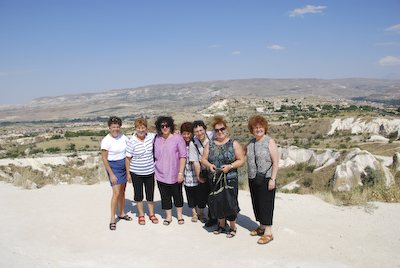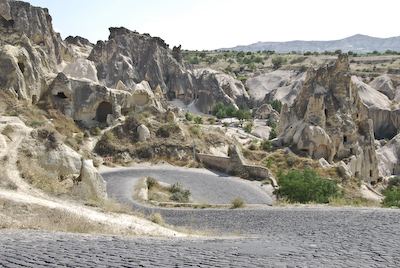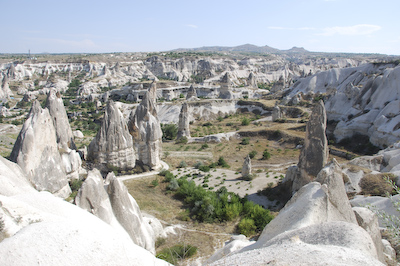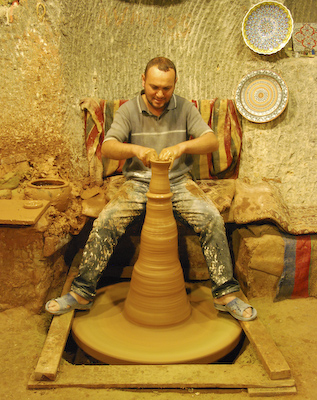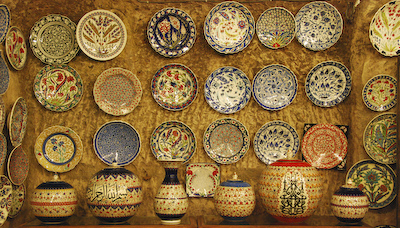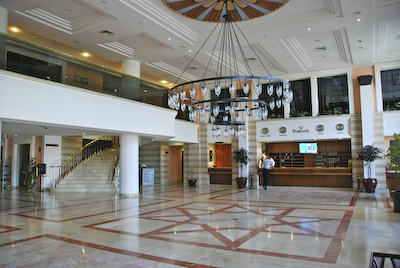I slept well in the large comfortable modern room of the hotel. The next morning, we all gathered in the restaurant where we had dinner last night for a hearty Turkish breakfast.
We collected our luggage, filled up Selcuk’s van and went to look for the little village of Bahceli (pronounced Bachely) or Khohn in Armenian. Bahcelikoy means the village of the garden, or garden town, in Turkish. This had been an ancient Armenian village and we were going there to find the ruins of an Armenian church.
Selcuk and Armen asked several men for directions and we slowly drove through the delightful village. There was a stream of water quickly flowing next to the road. In this arid land water was important to the survival of the people. When we stopped the van in Bahceli, the local boys gathered to greet us and posed for photographs.
We stopped a local man who informed us that the church ruins were long gone because a road had been built on that site. The only things left were the walls which had surrounded the church and a lovely garden with fruit trees and flowers. He directed us to the road that had replaced the church ruins.
Then we drove Guillaume Perrier, the journalist who had been travelling with us, to the Erzincan airport. It was wonderful having Guillaume on the trip with us because he spoke multiple languages and frequently translated information for us and answered all our questions. He had an encyclopedic memory for details and was knowledgeable about Turkish history and culture. Guillaume was also an expert on current events in Turkey and the Middle East. He broadened our knowledge and added a deeper dimension to our journey. Thank you Guillaume! It was wonderful travelling with you!
We sadly said our farewells to Guillaume and continued on to the village of Bayirbag. The Armenian name had been Piterich. It had been an ancient Armenian village and we were there to find the ruins of an old Armenian monastery.
Armen asked a local man for directions and we were told to turn left at a broken fountain and continue on that road. We found the broken fountain which had an Armenian symbol carved into the stone and turned left. We travelled on the rocky dirt road for quite a while and climbed up a steep hill.
Finally we saw a farmer on a tractor ahead of us and asked him about the monastery. He said to continue further up the hill and assured us it was there. The van drove higher and higher up the steep hill on a bumpy single-lane dirt road.
The man led the way up and he finally stopped in front of two connected stone buildings and got off his tractor. He spoke rapidly in Turkish and pointed at the buildings. We surmised that this was what remained of the monastery.
It looked as if the two buildings were being used for housing or storage. The wall between the buildings was torn down but the farmer pointed out several crosses and Armenian writing carved into the stone.
Then he led the way up the steep hill and we followed him on foot. In about 100 feet we saw the ruins of a small chapel. Crosses had been carved into several stones and we could see the place where the alter had been.
Then the farmer wanted to show us something else and gestured to us to follow him. We climbed further up the steep hill until we came to the site of a Christian cemetery. The crude stones were lying flat on the ground and several of the plots had been dug up by people looking for treasures.
We were joined by a young man who we guessed was the farmer’s son. They pointed and gestured actively and chattered on, talking to us as if we understood Turkish.
Satisfied that we saw everything, we followed the two men down the hill and back toward the stone buildings. Standing silently near one of the buildings was an elderly man wearing a knitted skull cap. In his hand was a string of brown prayer beads that the people of Anatolia use to pray.
We greeted him and the farmer introduced all of us in Turkish. The man smiled and welcomed us to his home and land. It turned out that the young man was his grandson and the farmer was a cousin.
We heard the word “chai” and someone in our group said “yes”, so the farmer gathered dried twigs and began to make a fire in a cement grill. A large blue tarp was brought out and set on the ground for us to sit on. Two blackened teapots were produced, one was filled with water. Finally, after much effort, the farmer put the pots on a rack in the grill. We all watched as the water boiled and the steam whistled out of the spout.
After a while, the farmer said he had no tea! I suppose he had invited us for tea to be hospitable, but Roseanne came to the rescue. She had teabags in her luggage! She went to the van to get her teabags. The farmer poured the water into the glasses, Roseanne circulated her teabags, and we sat down on the tarp to drink tea in the shade of a large walnut tree. The three men could not have tea because it was Ramadan, but they sat with us and were gracious.
The elderly man had been squatting near a tree and watched the farmer make chai. Quietly he rose and his grandson helped him wash his hands and feet. The grandson produced a small carpet. Then the man kneeled on the carpet and began to pray quietly in one corner of the tarp.
Can it get any better than this? We were sitting on a blue plastic tarp under the trees, in the country on a high hill having tea with three generations of Turkish farmers. A soft breeze was blowing and the sun shone brightly. This was a WOW moment!
